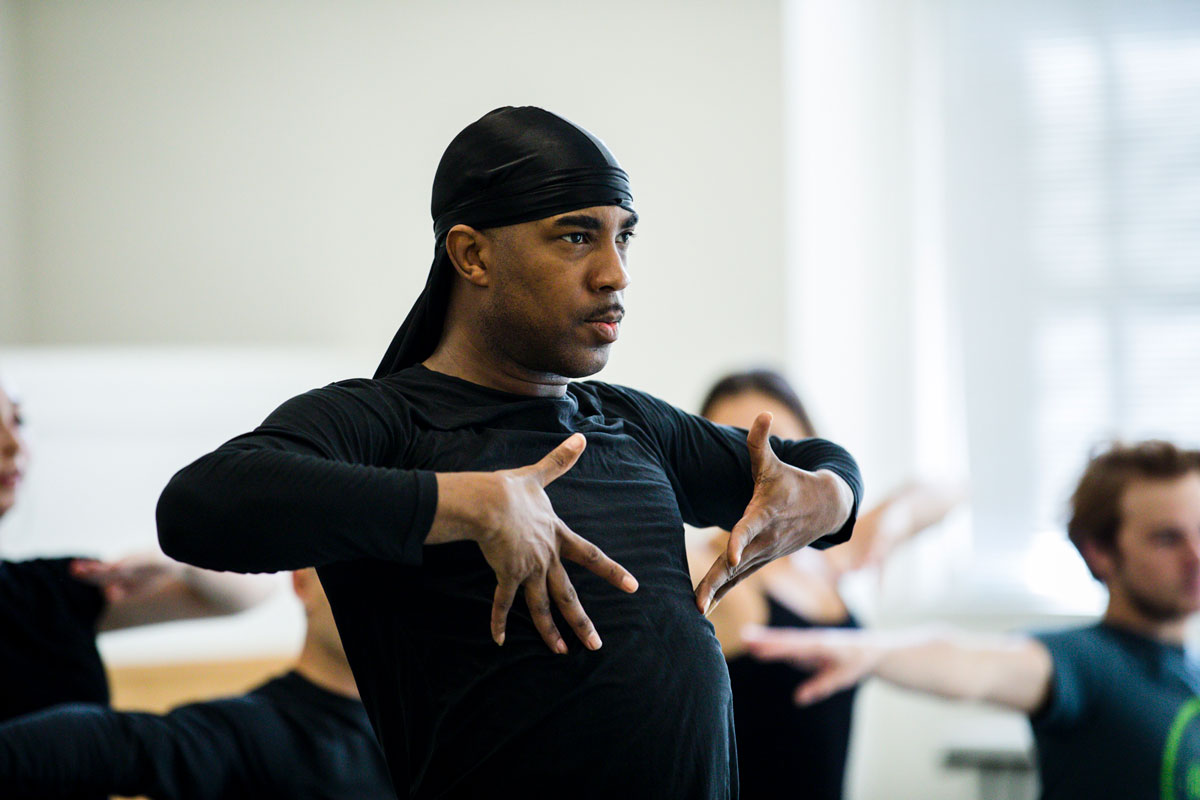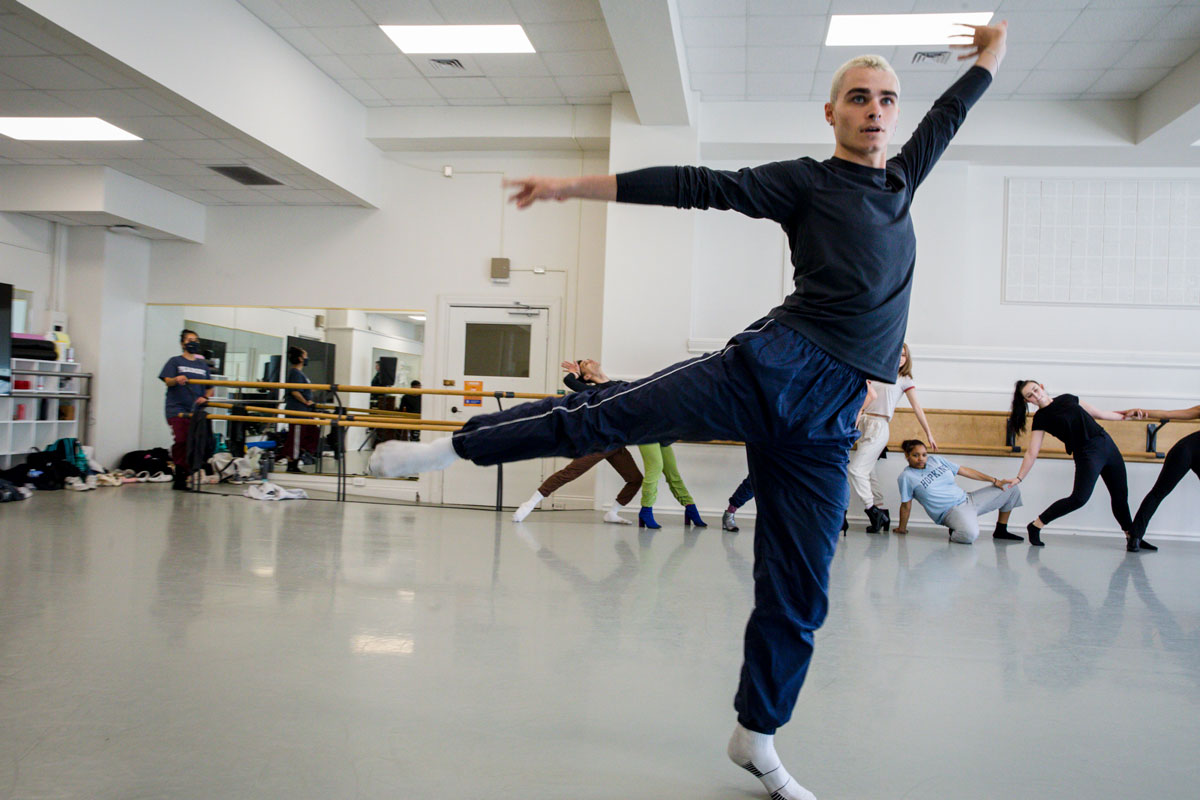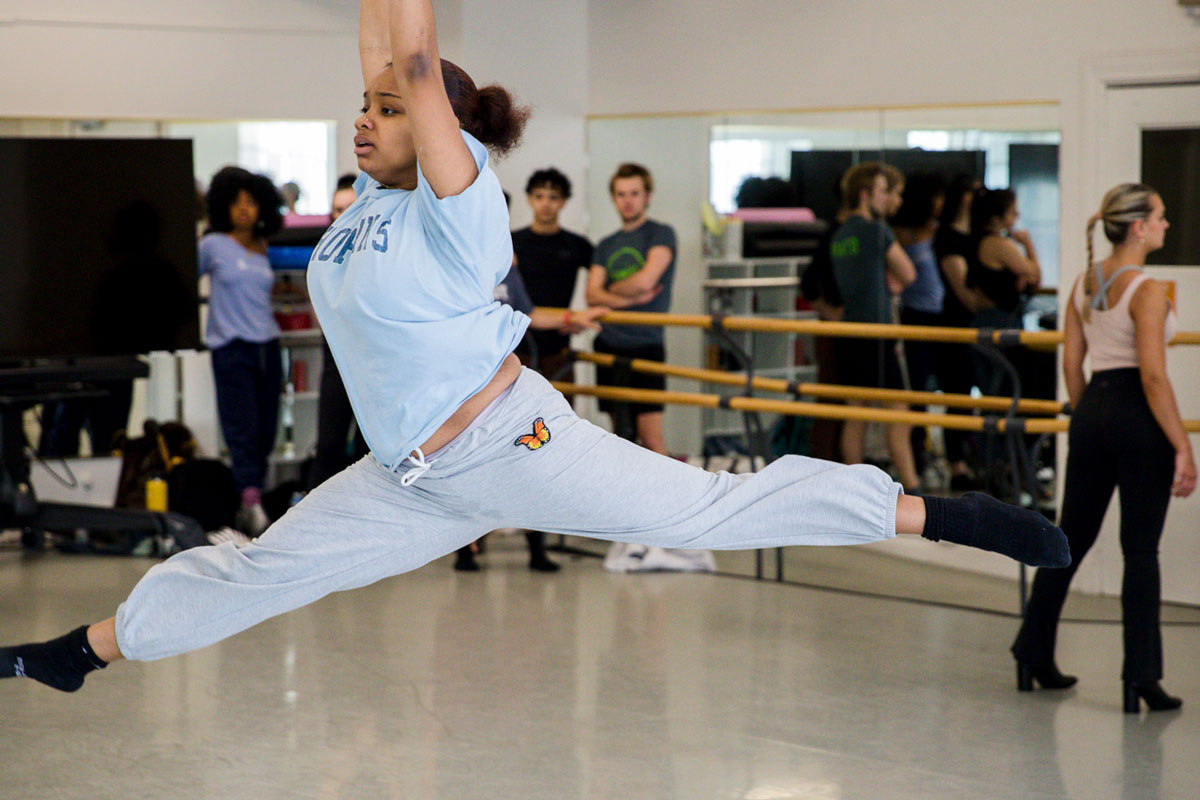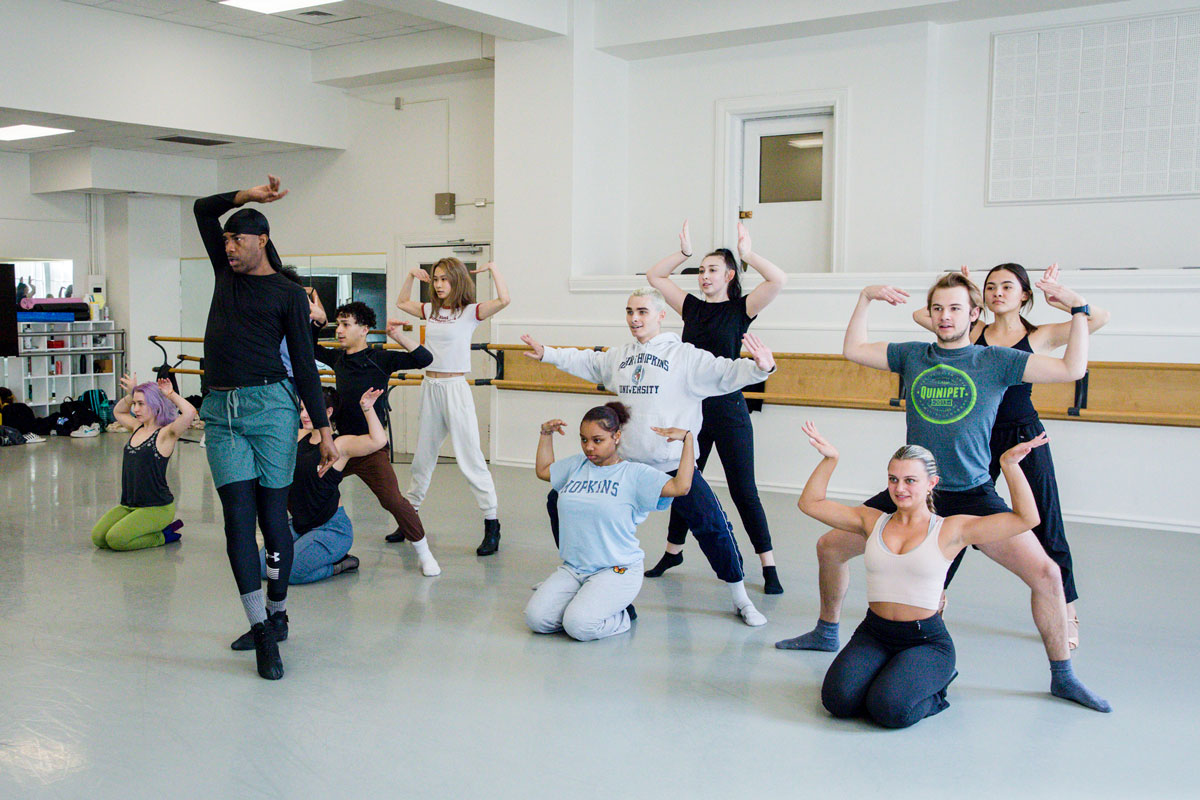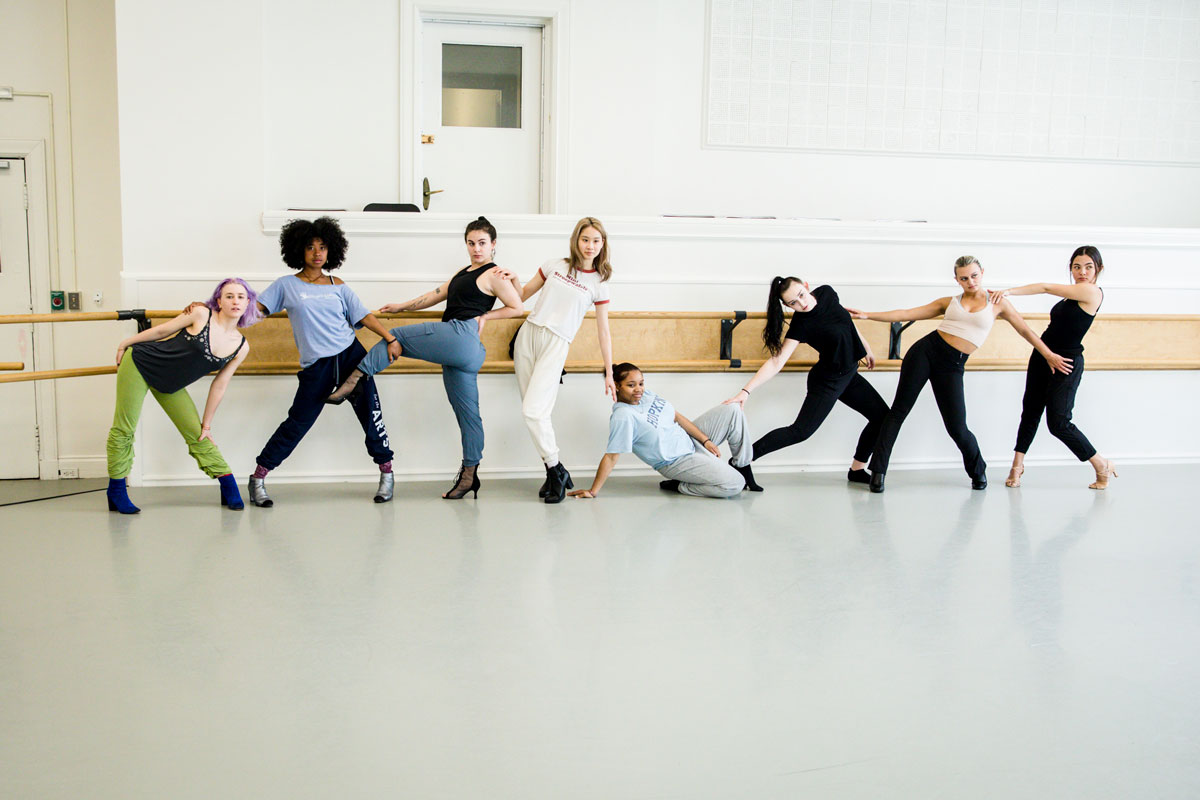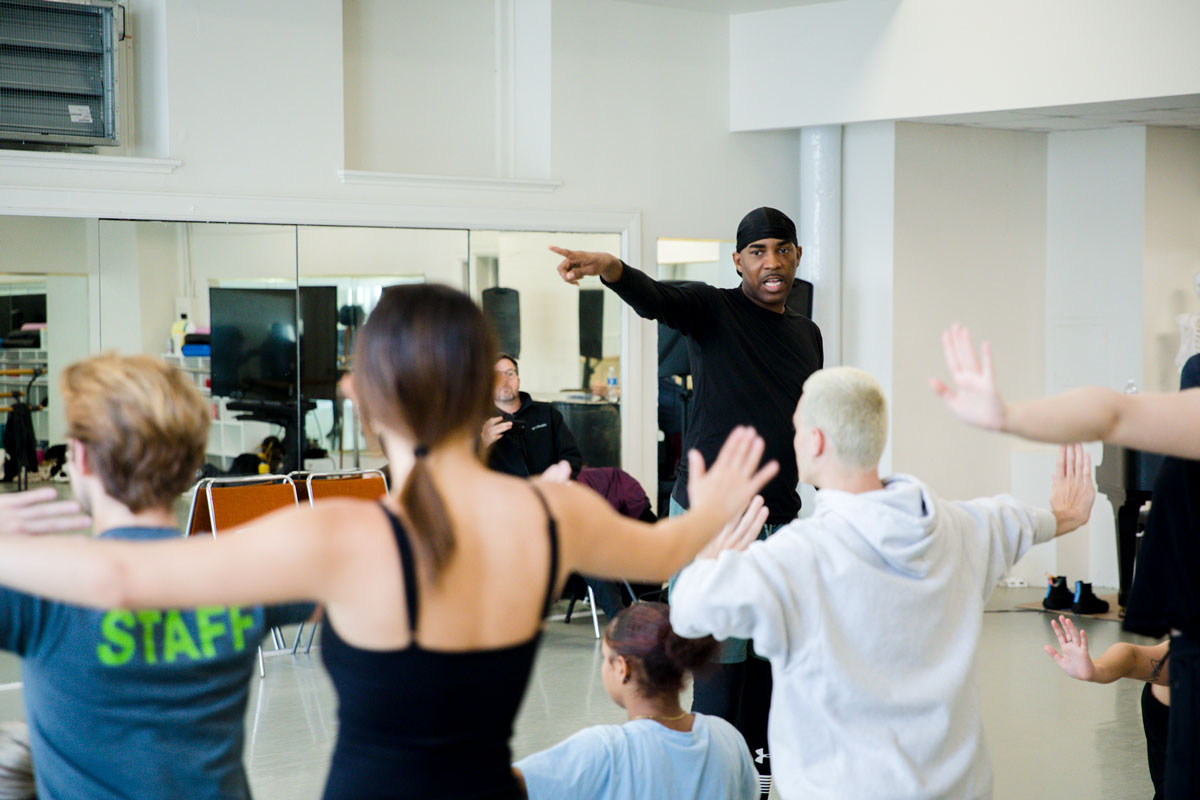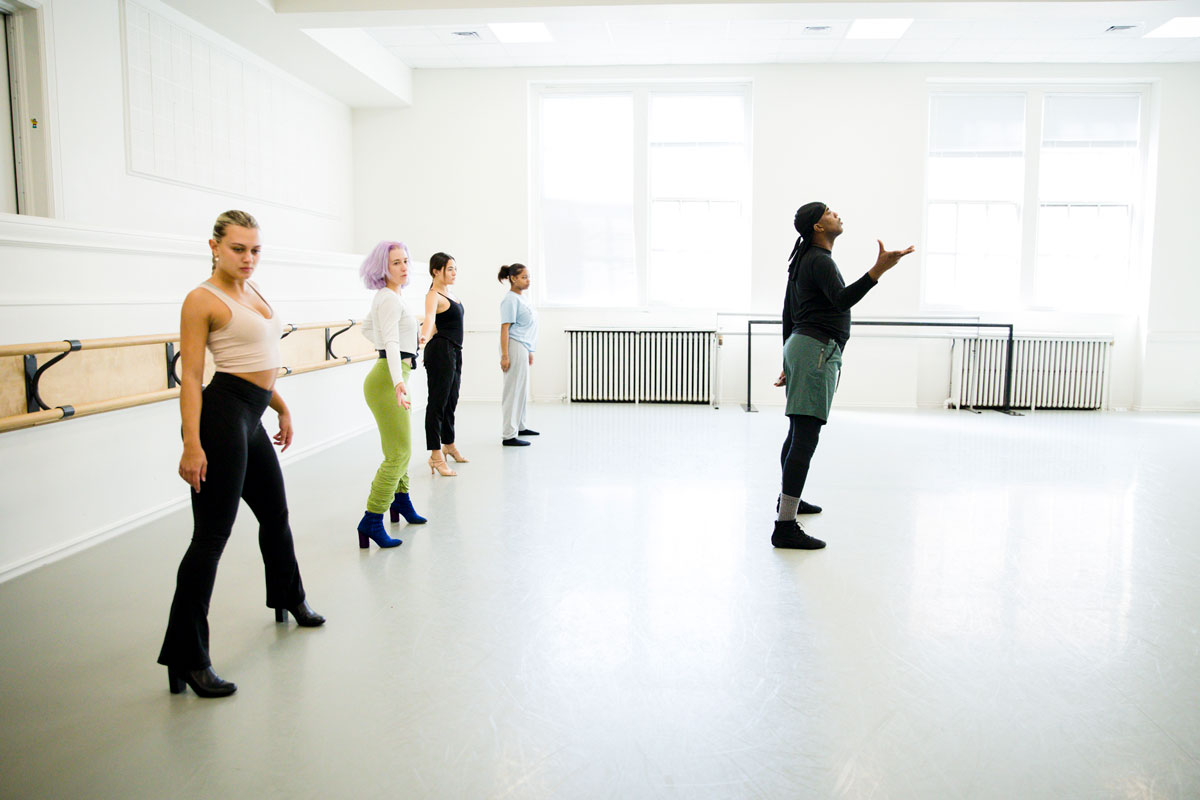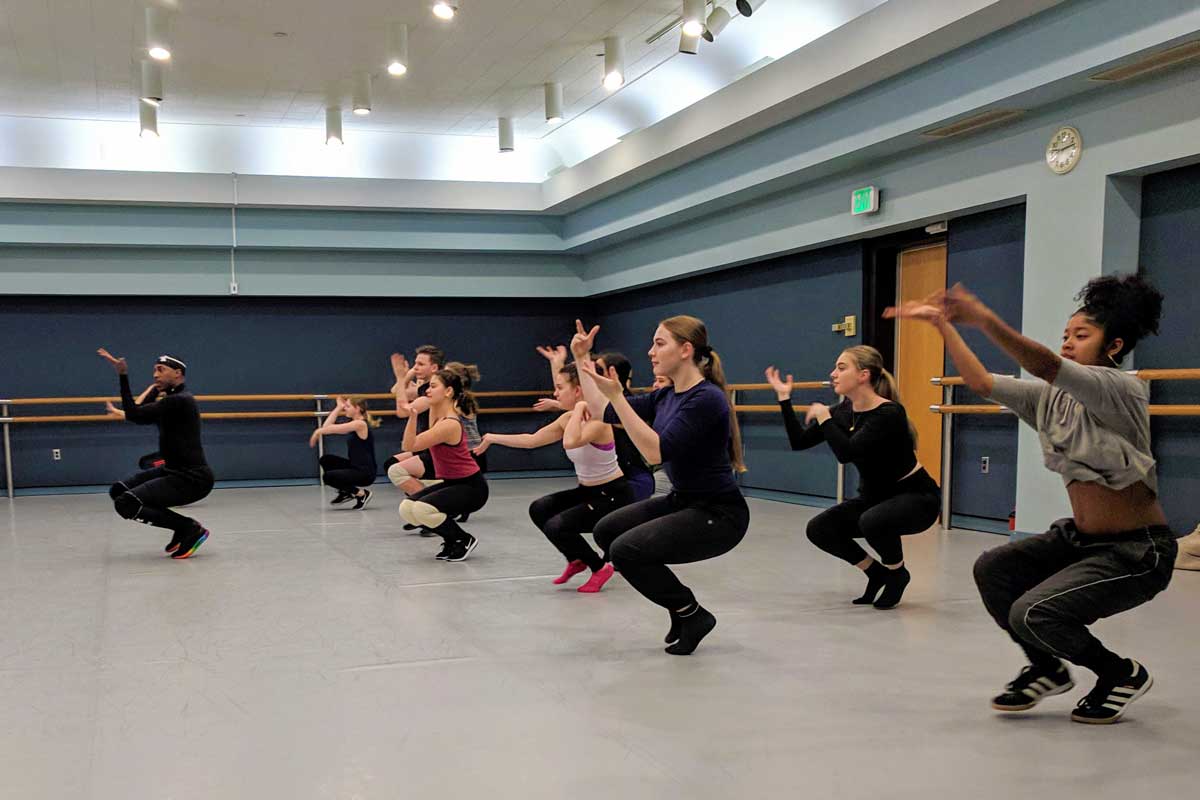
Icon Marquis Revlon Clanton with Peabody BFA Dance students. Photo by Gerard Gaskin.
Peabody BFA Dance Collaboration
Peabody BFA Dance Collaboration
Project director Joseph Plaster launched a collaboration between the Peabody BFA Dance Program and Icon Marquis Revlon Clanton, a Baltimore-based vogue dancer who has performed and taught throughout the United States, South Korea, Russia, and Europe.
Since 2019, Clanton has led countless workshops for Peabody Dance students. He focuses on the five elements of vogue—hand performance, duckwalk, catwalk, floor performance, and spins and dips—and shows students how to combine the elements to “tell a story through your body.” Clanton and students kicked off our 2019 and 2023 balls with choreographed performances that combined elements of vogue, ballet, and other dance traditions.
Photos by Saskia Kahn
Oral History Excerpts
EXCERPTS FROM DR. JOSEPH PLASTER’S ORAL HISTORY WITH CLANTON:
My mother said I came out the womb dancin’. So, I can remember that I always danced…One thing that I like about voguing is you could be whatever you want to be – you could be yourself. With voguing, I just felt like you could be free.
When I teach classes, I try to explain it to the students so they understand a little history behind the movements. I would let you know that voguing is all five elements. I would break down the elements, with hand performance, with catwalks, with duckwalks, with spins, with dips, floor performance….I also would explain [that] it comes from New York City. It started off with poses in the magazine. You know how when a model is doing a photo shoot, and the photographer says ‘pose?’ It started with poses, and then the poses created movement and create flow, and then from there, it created the form.
When you learn other dances, it’s more of routines. Voguing is elements, but when [you put] elements together, it’s more of a feelin’. So, when you’re voguing, you have to connect with some type of emotion, and that creates your story—whether it is a happy place, whether it’s pain, whether it’s insecurity, whether it’s aggression. Whatever it is, you have to just find that emotion, that feeling, and then put that in your vogue, and that will tell your story.”
When I first started voguing, we wasn’t inspired by butch queens that vogue. We was more inspired by fem queens and transgender women. We watched them vogue…If you wanted to vogue, you had to find some type of inspiration, and most of the inspiration came from the transgender girls. [Vogue’s history is important] because anytime you have a history, you have something to follow. You have something to look up to, and then you also have something to call your own. At that point when it started, it was a place where we call it our own because other places we couldn’t. So you take that with pride.
When [ballroom] started, it was a place where we call it our own because other places we couldn’t call our own. It started off with mainly black and Latino, but now it’s everybody, everybody. A lot of us that was a part of it when it was underground –it is good for us to let our voices be heard when it’s going mainstream because if you want to use this culture, make sure that you hire people and book people that know what this culture is about.
I’m super excited about the Peabody project because it shows how far we have came in ballroom. At one point in time, we probably wasn’t even able to come up in here, and then we might have came up here to see a book. Now, we comin’ in here into havin’ an event. So, it shows the growth. It’s something good for the ballroom community, and I just think it’s something good for Baltimore, in general.
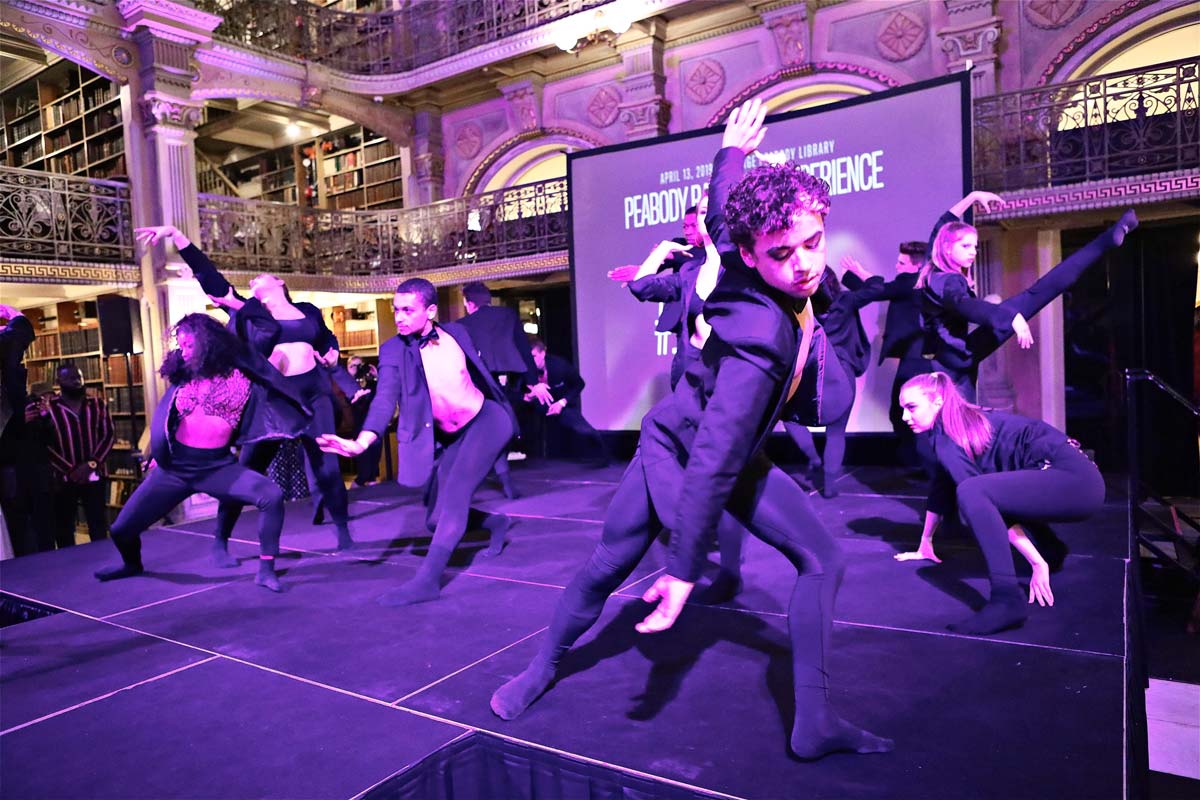
Peabody BFA Dance students perform at the April 13 ball. Photo by Gerard Gaskin.
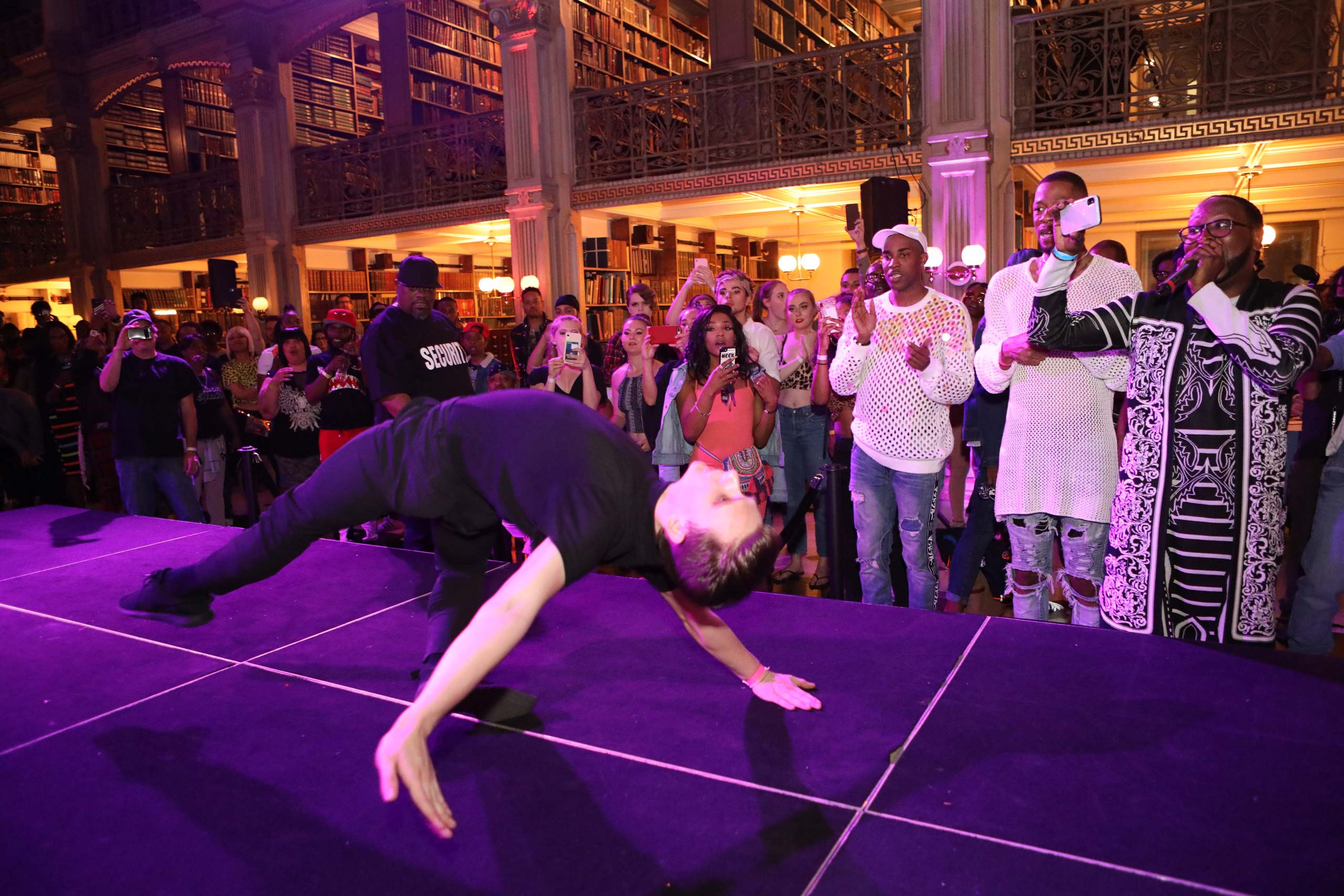
Peabody BFA Dance student “dips” at the Peabody ball. Photo by Gerard Gaskin.
EXCERPTS FROM PLASTER’S INTERVIEW WITH PETER, A PEABODY DANCE STUDENT:
[The vogue workshops] absolutely allowed me to tap into my queer identity, especially being at the ball and seeing such a wide range of people. There were cisgendered gay men, there were transwomen, there were cisgendered straight women, there were people of all different identities—sexual, gender—and it was just so amazing to see all of these people come together as a community that really served each other. So as a queer man, that absolutely spoke to me because I immediately associated it with a family. It’s a reminder that art and dance and creation can really form a community. I think that was just a huge reminder to me about what art and dance is and what it should be.
EXCERPTS FROM PLASTER’S INTERVIEW WITH CHASE, A PEABODY DANCE STUDENT:
I loved the sense of community that was established at the ball, because even though obviously people were competing against each other and there was monetary value at stake for people to win, it didn’t really matter. It just felt like everyone was supporting each other. If you went up there and you were owning it and you were killing it up there, everyone saw that and was supportive of you no matter where you were from or who you were.
Oral History Excerpts
Oral History Excerpts
EXCERPTS FROM PLASTER’S INTERVIEW WITH PETER, A PEABODY DANCE STUDENT:
[The vogue workshops] absolutely allowed me to tap into my queer identity, especially being at the ball and seeing such a wide range of people. There were cisgendered gay men, there were transwomen, there were cisgendered straight women, there were people of all different identities—sexual, gender—and it was just so amazing to see all of these people come together as a community that really served each other. So as a queer man, that absolutely spoke to me because I immediately associated it with a family. It’s a reminder that art and dance and creation can really form a community. I think that was just a huge reminder to me about what art and dance is and what it should be.
EXCERPTS FROM PLASTER’S INTERVIEW WITH CHASE, A PEABODY DANCE STUDENT:
I loved the sense of community that was established at the ball, because even though obviously people were competing against each other and there was monetary value at stake for people to win, it didn’t really matter. It just felt like everyone was supporting each other. If you went up there and you were owning it and you were killing it up there, everyone saw that and was supportive of you no matter where you were from or who you were.

Peabody BFA Dance student “dips” at the Peabody ball. Photo by Gerard Gaskin.
EXCERPTS FROM DR. JOSEPH PLASTER’S ORAL HISOTRY WITH CLANTON:
My mother said I came out the womb dancin’. So, I can remember that I always danced…One thing that I like about voguing is you could be whatever you want to be – you could be yourself. With voguing, I just felt like you could be free.
When I teach classes, I try to explain it to the students so they understand a little history behind the movements. I would let you know that voguing is all five elements. I would break down the elements, with hand performance, with catwalks, with duckwalks, with spins, with dips, floor performance….I also would explain [that] it comes from New York City. It started off with poses in the magazine. You know how when a model is doing a photo shoot, and the photographer says ‘pose?’ It started with poses, and then the poses created movement and create flow, and then from there, it created the form.
When you learn other dances, it’s more of routines. Voguing is elements, but when [you put] elements together, it’s more of a feelin’. So, when you’re voguing, you have to connect with some type of emotion, and that creates your story—whether it is a happy place, whether it’s pain, whether it’s insecurity, whether it’s aggression. Whatever it is, you have to just find that emotion, that feeling, and then put that in your vogue, and that will tell your story.”
When I first started voguing, we wasn’t inspired by butch queens that vogue. We was more inspired by fem queens and transgender women. We watched them vogue…If you wanted to vogue, you had to find some type of inspiration, and most of the inspiration came from the transgender girls. [Vogue’s history is important] because anytime you have a history, you have something to follow. You have something to look up to, and then you also have something to call your own. At that point when it started, it was a place where we call it our own because other places we couldn’t. So you take that with pride.
When [ballroom] started, it was a place where we call it our own because other places we couldn’t call our own. It started off with mainly black and Latino, but now it’s everybody, everybody. A lot of us that was a part of it when it was underground –it is good for us to let our voices be heard when it’s going mainstream because if you want to use this culture, make sure that you hire people and book people that know what this culture is about.
I’m super excited about the Peabody project because it shows how far we have came in ballroom. At one point in time, we probably wasn’t even able to come up in here, and then we might have came up here to see a book. Now, we comin’ in here into havin’ an event. So, it shows the growth. It’s something good for the ballroom community, and I just think it’s something good for Baltimore, in general.

PPhotos by Saskia Kahn.

